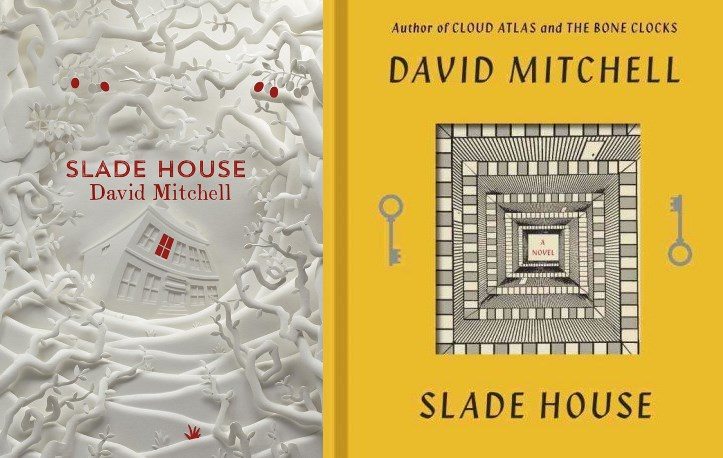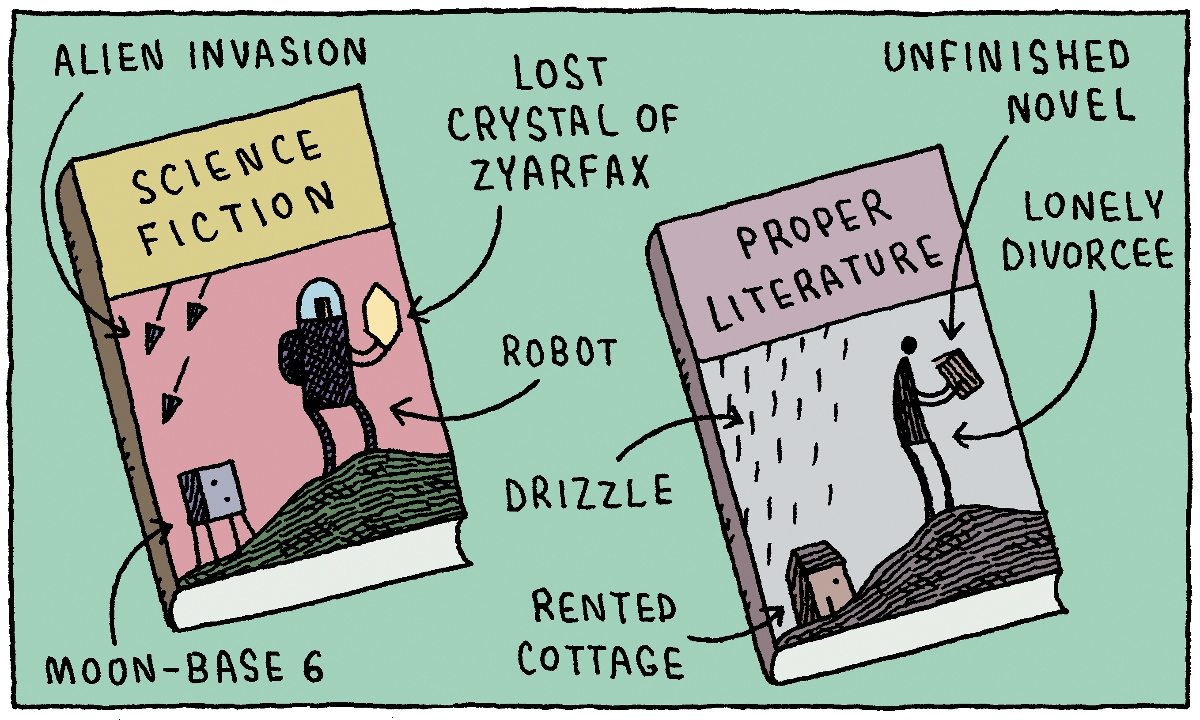 Having started with an author I’d never read for my first literary SFF read, my second choice of writer put me on much more familiar ground. David Mitchell is one of my favorite authors.
Having started with an author I’d never read for my first literary SFF read, my second choice of writer put me on much more familiar ground. David Mitchell is one of my favorite authors.
Ever since I first read his masterpiece of interlocking short stories, Ghostwritten, I wait impatiently for his next book to arrive, devour it almost instantly, and then start the wait again.
The sudden arrival of Slade House, a little over a year since I read The Bone Clocks, was a very welcome surprise (the usual wait between novels is around four years). When the book arrived, the comparatively fast turnaround time was explained. Compared with previous novels, Slade House is a slim 233 pages, and the print is fairly large too.
The basis of the stories in the book came from Mitchell’s storytelling tweets from around the time that The Bone Clocks was published. Whilst Mitchell’s internet presence is fairly low key, he’s not afraid to harness its story-telling power.
I said that Slade House contains “stories,” so is this a novel or a set of short stories? Both. Mitchell is the master of morphing short story collections into novels. He most famously employed this device in Cloud Atlas, a novel in which the stories are nested inside one another, and where the whole novel has an axis of symmetry through its central tale.
There’s nothing so complicated here. What we have with Slade House is five stories told sequentially in time. Each story takes place on the 31st of October when, every nine years, the mysterious Slade House magically appears in the middle of a suburban street. The final story takes place on Halloween 2015.
Mitchell’s stories are ghost stories in the grand tradition. All are spooky, menacing, and a little bit scary. All set in the eponymous, haunted, Slade House. Whilst each story in the books could probably stand on its own, each one builds on what came before. Little bits of information are drip fed to the reader as each set of characters enters the house to challenge the horror behind the small black gate in the wall.
Slade House exists in the same world as Mitchell’s The Bone Clocks. Does this matter? Ultimately, yes. The first four stories would be fine, but number five, the one that contains the novel’s denouement, would be greatly diminished were you not familiar with the concept of what exactly a Bone Clock is. I frankly think you’d be baffled and a little cheated that the novel ended they way it does. If you haven’t read The Bone Clocks yet, it’s a fine novel that will most certainly reward your attention.
Slade House is probably less SFF than both The Bone Clocks and Cloud Atlas. There are supernatural elements, and certainly something fishy going on, but until the final pages there is very little of the science fiction motif that underpins The Bone Clocks.

Why do I like Mitchell’s novels so much? Partly it’s the audacious structures he uses, but mostly it’s his use of language. It probably helps Mitchell is about my age and his upbringing in “The Midlands” is similar to mine. His semi-autobiographical Black Swan Green, a story about a teenage boy, is set about twenty miles from where I spent my teenage years. Needless to say, I loved it. Mitchell’s cultural grounding feels like my cultural grounding.
But you don’t have to have lived just south of Birmingham (UK) to like his books. Like all great writers, Mitchell has that knack of pulling a short concise metaphor out of the air, that perfectly encapsulates a feeling or notion you’ve had, but can never quite describe. He notices the small details in life that you don’t notice you’ve noticed. Things you don’t realize you’re aware of until Mitchell points them out to you.
I very much enjoyed reading Slade House. It is certainly one of his most accessible novels, and I would recommend it for those who had never read him, were it not for its dependence on having read The Bone Clocks to get the most from it.
Whilst the books is certainly enjoyable, I don’t think this is a novel that will extend Mitchell’s legend as a writer. It’s an entertaining story, well executed, but it doesn’t play with genre or structure in the way Cloud Atlas or The Bone Clocks does. A good novel then, but not a great one.
Many thanks to Nicky of Hodder Books UK, for sending me a copy of this book for my literary SFF project. Next up is Iain Pears’ multi-dimensional, time travel novel Arcadia.




